
Remember Charlotte from Charlotte’s Web? She’s the benevolent spider who weaves praise in her web for Wilbur the pig. Each of her webs is different, bearing the right message needed depending on Wilber’s situation (and Charlotte’s inspiration). Whether helping him place at the county fair or saving him from slaughter, each web accomplishes the goal at hand.
Like each of Charlotte’s webs, each marketing organization is different. While they all share the need to deliver better, more personalized customer experiences at scale, each needs to consider what it is about their industry, audiences and offering that is unique—and create the interconnections that incorporate the process, teams and technology that make sense for their business.
Succeeding in the digital age means marketing leaders need to transform. Tweaks and adjustments won’t cut it, and those sticking with the status quo will fade away. Iconic brands Nokia, Kodak, Borders, Tower Records, Hess and Compaq are examples of casualties (as are close to 90% of companies that were on the Fortune 500 list in 1955) for failing to change. These companies have been replaced by innovative, aggressive and now common names that are less than 20 years old, like Facebook, Apple, Google, Amazon and Uber. Why? Because they saw markets in need of transformation, and made it happen, leaving less nimble players behind.
Today, 76% of marketers believe marketing has changed more in the last two years than it did in the previous 501. No one argues that marketing needs to be proactive in addressing the challenge of the digital age—in fact, McKinsey, BCG and the like have substantiated what a transformed firm looks like. Challenge is, while the C-suite sets the firm’s transformation context for Wall Street, the framework marketing must work within to transform is often under-defined.
Clear definition of what transformation looks like for an individual marketing organization is difficult. Why? Because there’s no one end-state or solution to pursue.
Every marketing organization has unique characteristics that determine its priorities to transform—but there are commonalities. Most marketing groups need to focus on what it takes to personalize customer experiences at scale. Due to the transcendent nature of executing personalization, achieving it involves putting new operating models in place, and employing fundamental applications of agile principles.
Adopting a new operating model and agile principles—vital to survival—is where the commonality among marketing groups ends. Each marketing leader has to determine how to meet their specific needs in the way they organize, orchestrate, automate and staff. They have to figure out what it will take to win in their environment, considering the industry dynamics—and the strengths and weaknesses of their own company and its offerings.
CMOs and other marketing execs must recognize that this proposition is not as abstract as it may sound. They need to ask (and answer) the tough “how” questions to help them leverage their singularity, and compete in a rapidly evolving digital environment:
We are not interested in long-winded consultant-speak. We are, however, interested in providing a simple framework with which to give context to your marketing origination’s prowess. We’ve identified five dimensions of a marketing organization:
Further, for each of these dimensions, overall characteristics can be assessed for current and desired states. It is through honest study and debate we can use this framework to prioritize improvements for an individual marketer.
For each of these dimensions we can identify various characteristics a marketing organization may exhibit.

Because of each firm’s intended uniqueness, evaluating marketing is not as simple as figuring out where you are on a traditional maturity model, on a scale of 1 to n, per se. That’s because there is no single right or wrong—only the specific spider web that is right for you.
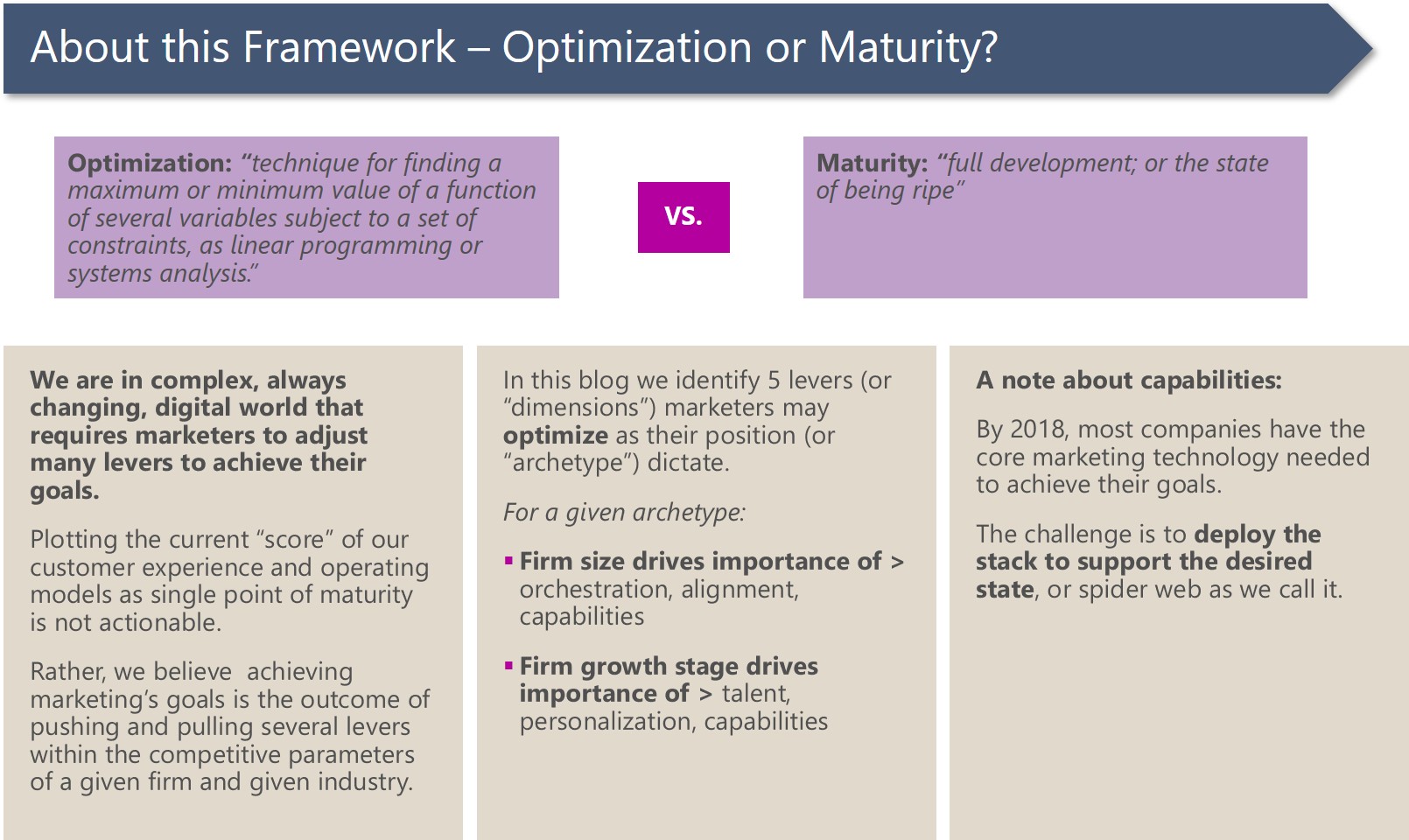
In a recent assessment we performed for a leading B2B manufacturer, our consultants were able to glean fundamental operational priorities along these dimensions to inform a focused action plan, within the context of a future operating model to prioritize action plan initiatives:
First, we worked with them to design operating for marketing in a digital world based on their specific situation:
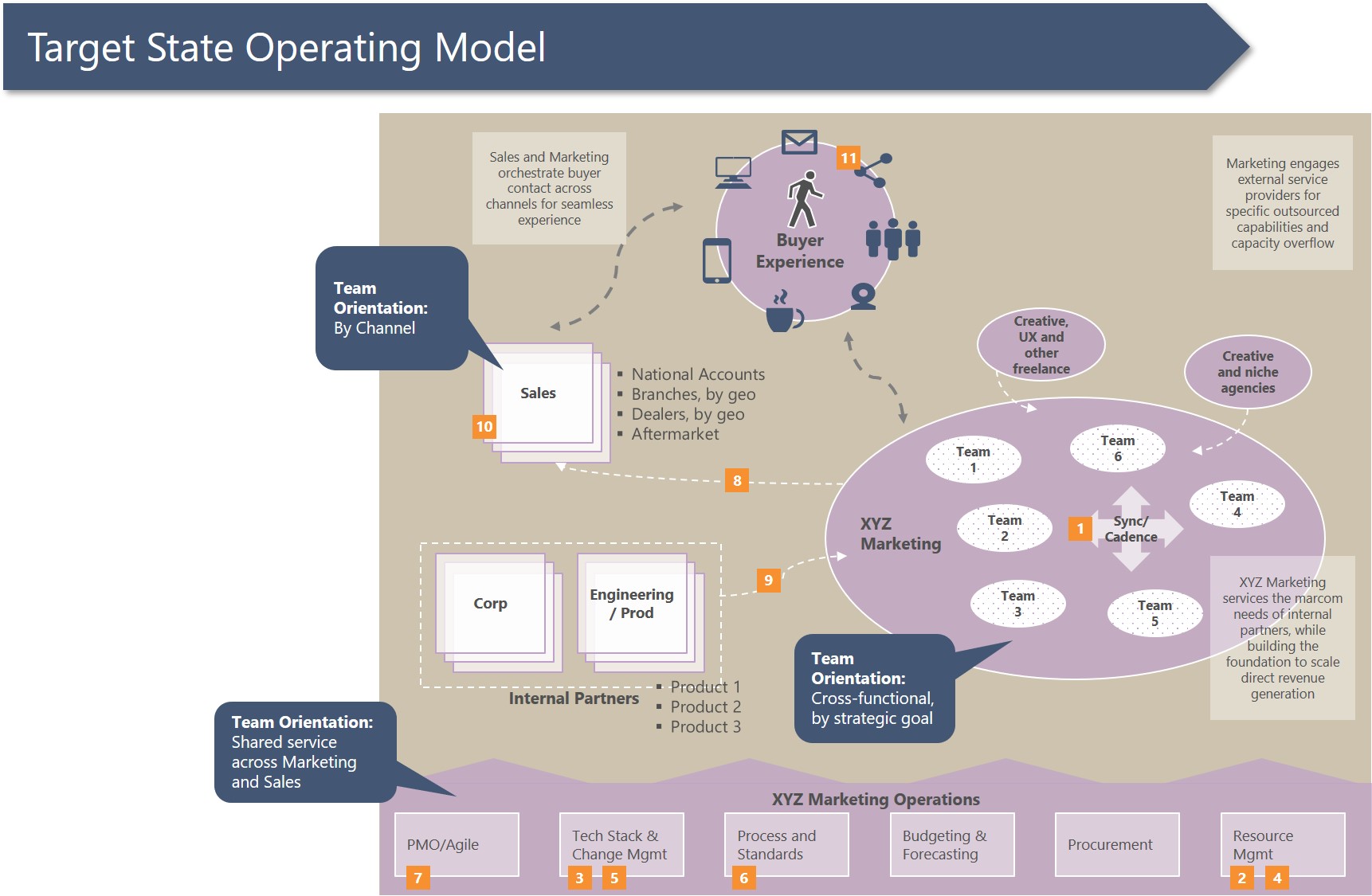
Then, we helped them identify challenges for each of the 5 dimensions, again, with their uniqueness in mind:

While we have established that a marketing team in a given firm will navigate unique circumstances, there are commonalities. To demonstrate the assertion that transformation isn’t a one-size-fits proposition, let’s take a look at four archetypes then assess along the marketing transformation dimensions.
To show how the dimension scoring works with different types of organizations, according to our model, we draw on the recent experiences of four Zee Jay Digital clients:
Each of these organizations is taking an approach to marketing transformation based on the context of their business and industry, and in light of their current state of marketing.
That current state is scored on a scale of 0 to 5—and the reasons for the scoring are documented.
The desired future state is also scored on a scale of 0 to 5, based on initiatives already begun, and prioritization of what needs to happen in order to meet goals. The decision drivers are documented (and measured on an ongoing basis).
A picture (that is, a spider diagram) is developed (and shown here) for comparison purposes, to show how levers among the five dimensions are evaluated, then adjusted, to achieve optimization.
Spider diagrams, not unlike Charlotte’s webs, are a helpful visual tool for distilling complex dimensions into a single, memorable view that can be used to compare corresponding points from one state of transformation to another, and from one organization to another. We’ve included the here to help marketing leaders like you learn from others who’ve taken this path, and help you figure out how to plot your own destiny.
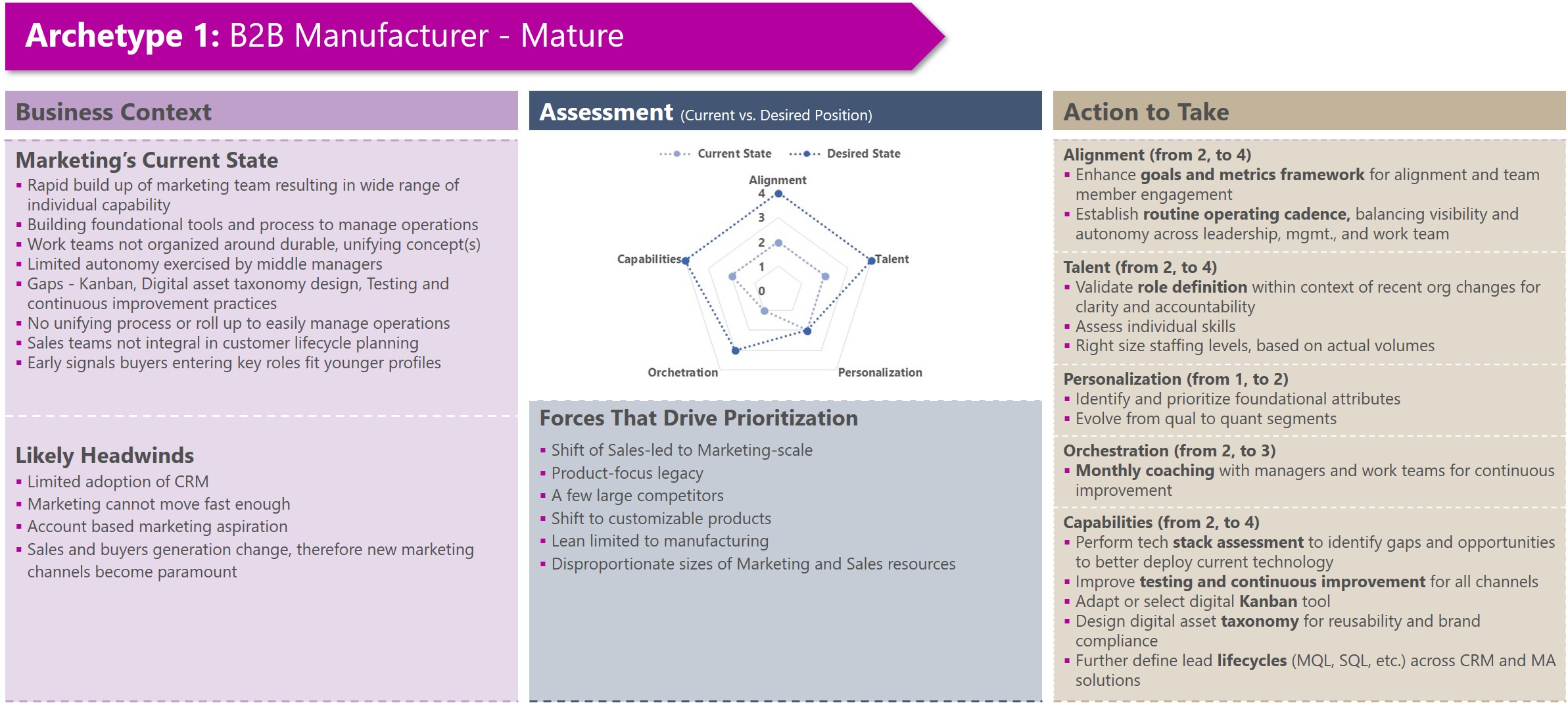

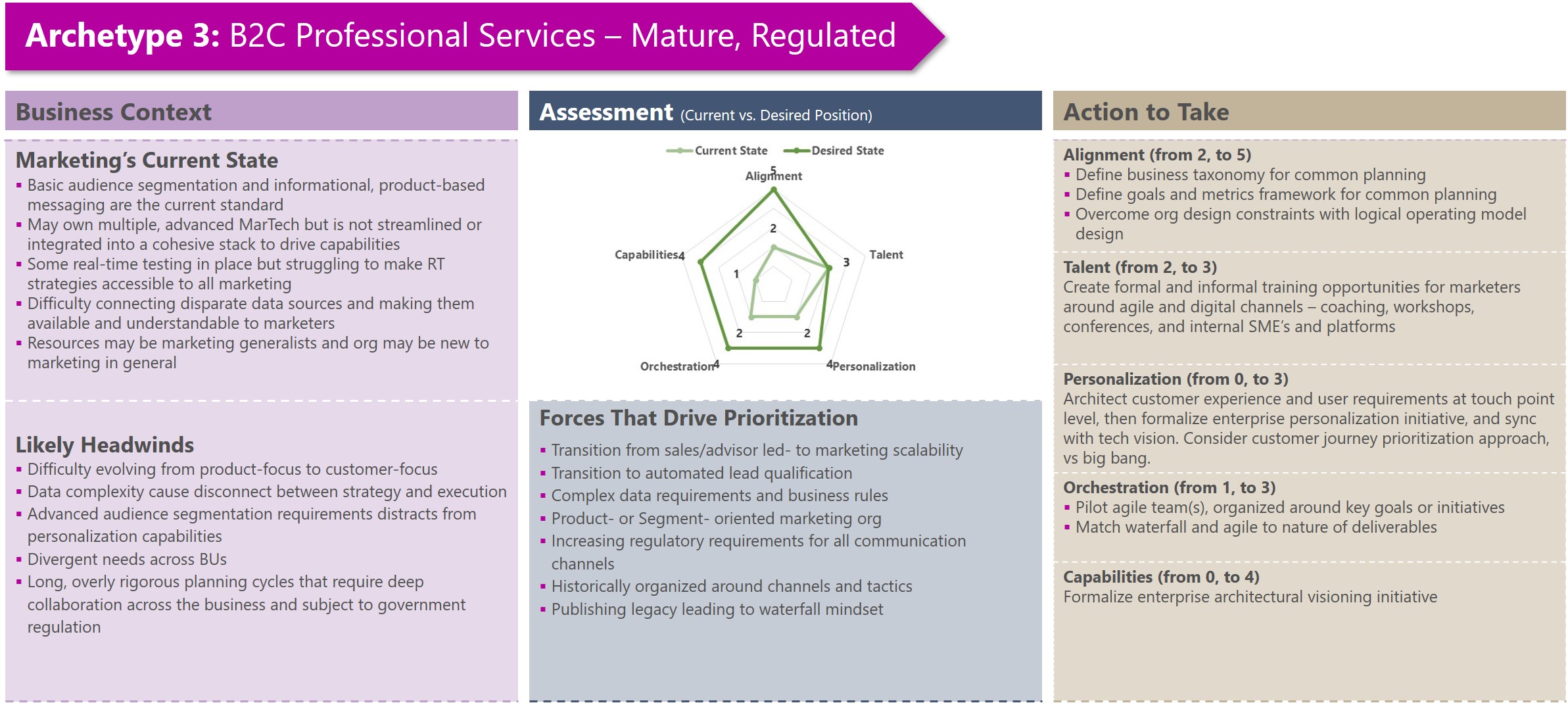
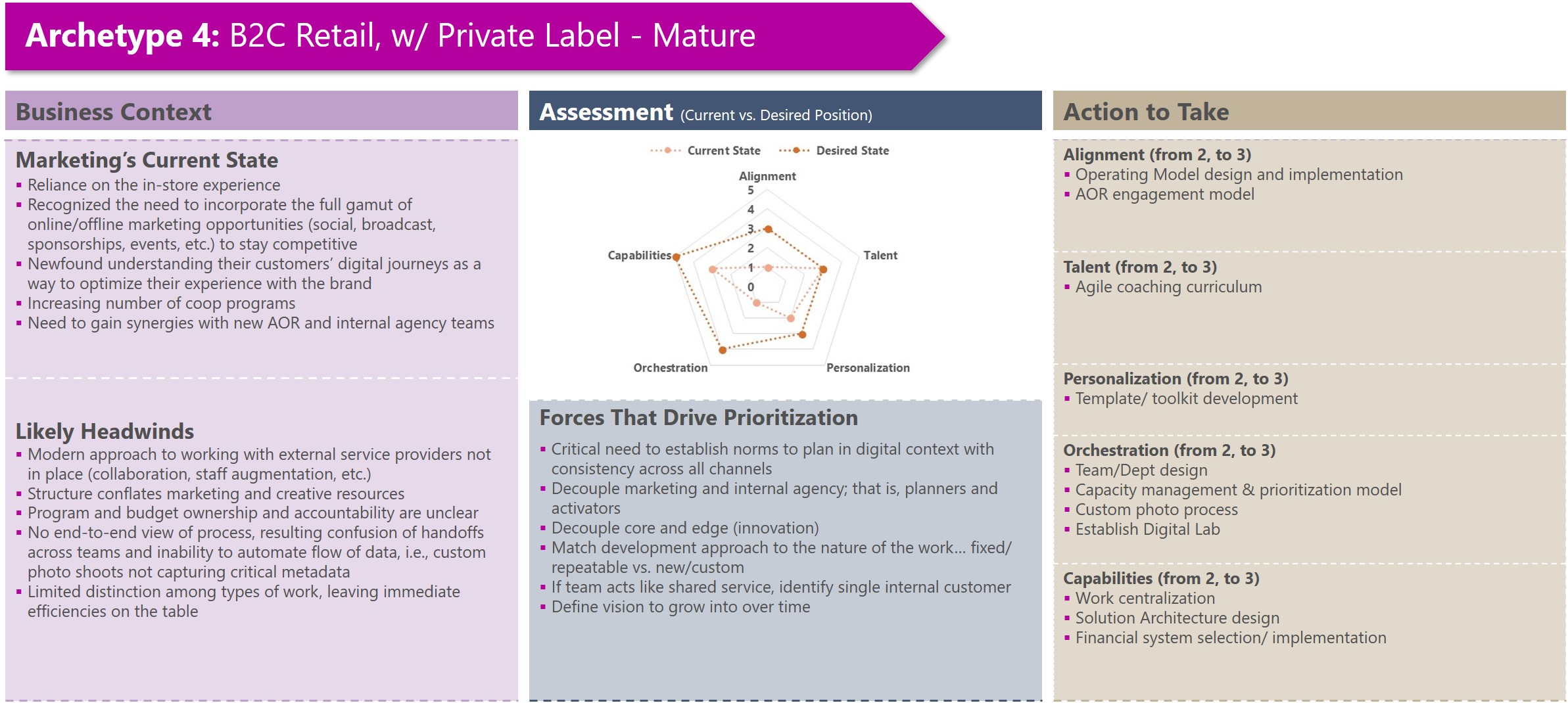
We encourage you to evaluate your organization based on the five key dimensions—alignment, personalization, orchestration, capabilities and talent—described in this post. By taking a systematic look at how your marketing gets done, in light of variables that set you apart, you’ll get insight needed to optimize the way you structure, organize and compete in today’s complex digital environment.
Like the webs Charlotte made for Wilber, your marketing spider webs will reveal your organization’s potential to confidently take on the challenges of our changing world.
--------------
1 Venture Harbor